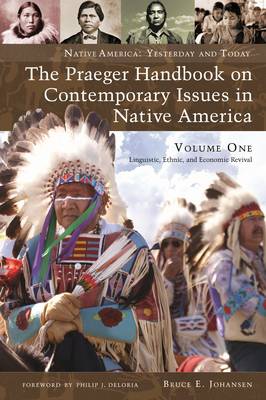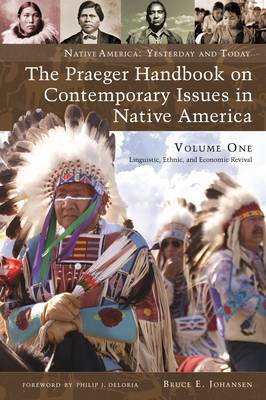
- Retrait gratuit dans votre magasin Club
- 7.000.000 titres dans notre catalogue
- Payer en toute sécurité
- Toujours un magasin près de chez vous
- Retrait gratuit dans votre magasin Club
- 7.000.0000 titres dans notre catalogue
- Payer en toute sécurité
- Toujours un magasin près de chez vous
The Praeger Handbook on Contemporary Issues in Native America [2 Volumes]
Bruce E JohansenDescription
Most Americans know very little about Native America. For many, most of their knowledge comes from an amalgam of three sources--a barely remembered required history class in elementary school, Hollywood movies, and debates in the news media over casinos or sports mascots. This two-volume set deals with these issues as well as with more important topics of concern to the future of Native Americans, including their health, their environment, their cultural heritage, their rights, and their economic sustainability.
This two-volume set is one of few guides to Native American revival in our time. It includes detailed descriptions of efforts throughout North America regarding recovery of languages, trust funds, economic base, legal infrastructure, and agricultural systems. The set also includes personal profiles of individuals who have sparked renewal, from Sheila Watt-Cloutier, a leader among the Inuit whose people deal with toxic chemicals and global warming, to Ernest Benedict and Ray Fadden, who brought pride to Mohawk children long before the idea was popular. Also included are descriptions of struggles over Indian mascots, establishment of multicultural urban centers, and ravages of uranium mining among the Navajo. The set ends with a detailed development of contemporary themes in Native humor as a coping mechanism. Delving occasionally into historical context, this set includes valuable background information on present-day controversies that are often neglected by the news media. For example, the current struggles to recover Native American trust funds and languages both emerged from a cradle-to-grave control system developed by the U.S. and Canadian governments.
These efforts are part of a much broader Native American effort to recover from pervasive poverty and reassert Native American economic independence. Is gambling an answer to poverty, the new buffalo, as some Native Americans have called it? The largest Native American casino to date has been the Pequots' Foxwoods, near Ledyard, Connecticut. In other places, such as the New York Oneidas' lands in Upstate New York, gambling has provided an enriched upper class the means to hire police to force anti-gambling traditionalists from their homes. Among the Mohawks at Akwesasne, people have died over the issue. This two-volume set brings together all of these struggles with the attention to detail they have always deserved and rarely received.
Spécifications
Parties prenantes
- Auteur(s) :
- Editeur:
Contenu
- Nombre de pages :
- 464
- Langue:
- Anglais
- Collection :
Caractéristiques
- EAN:
- 9780275991388
- Date de parution :
- 30-04-07
- Format:
- Livre
- Dimensions :
- 167 mm x 240 mm
- Poids :
- 997 g

Les avis
Nous publions uniquement les avis qui respectent les conditions requises. Consultez nos conditions pour les avis.






